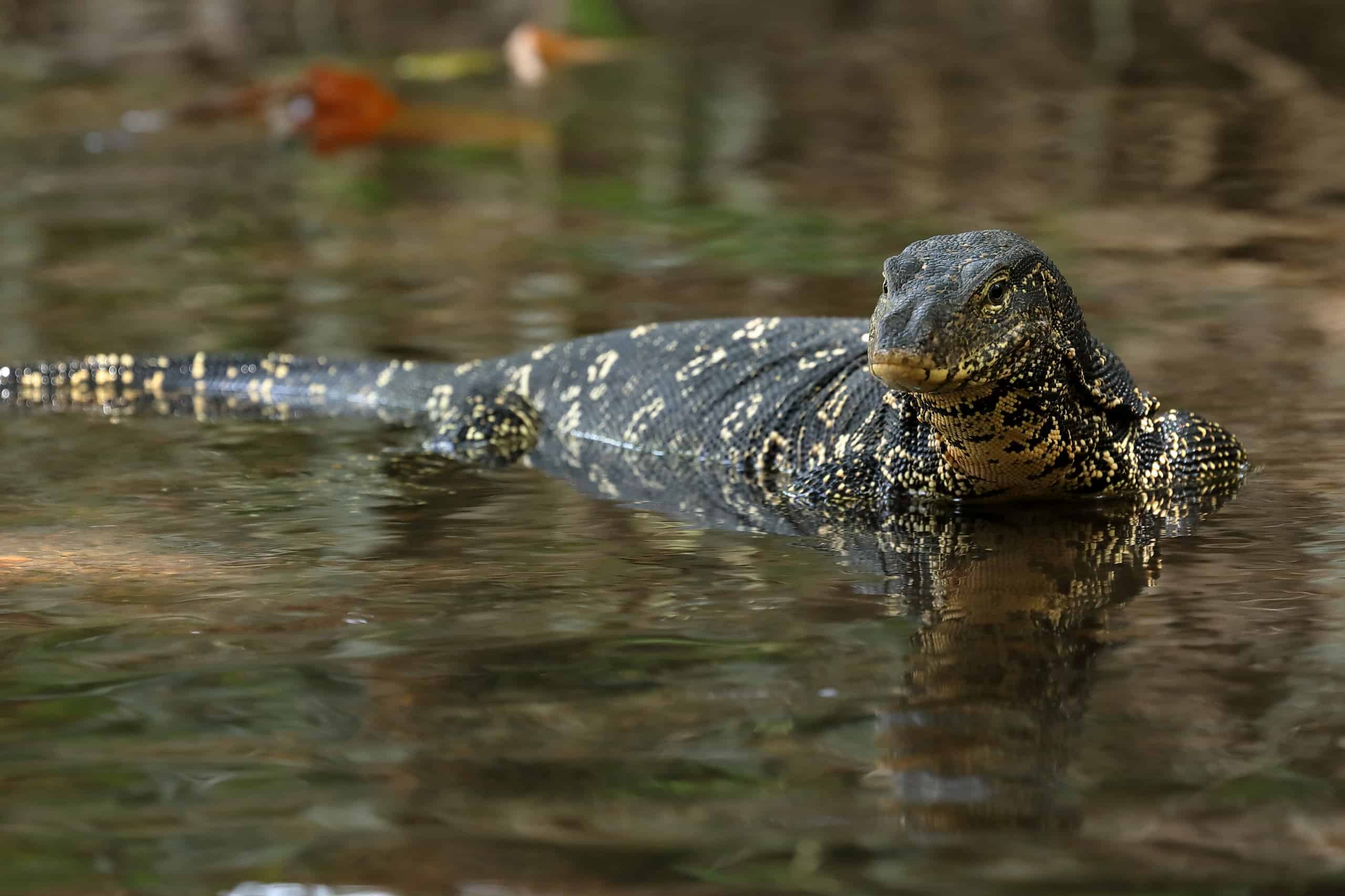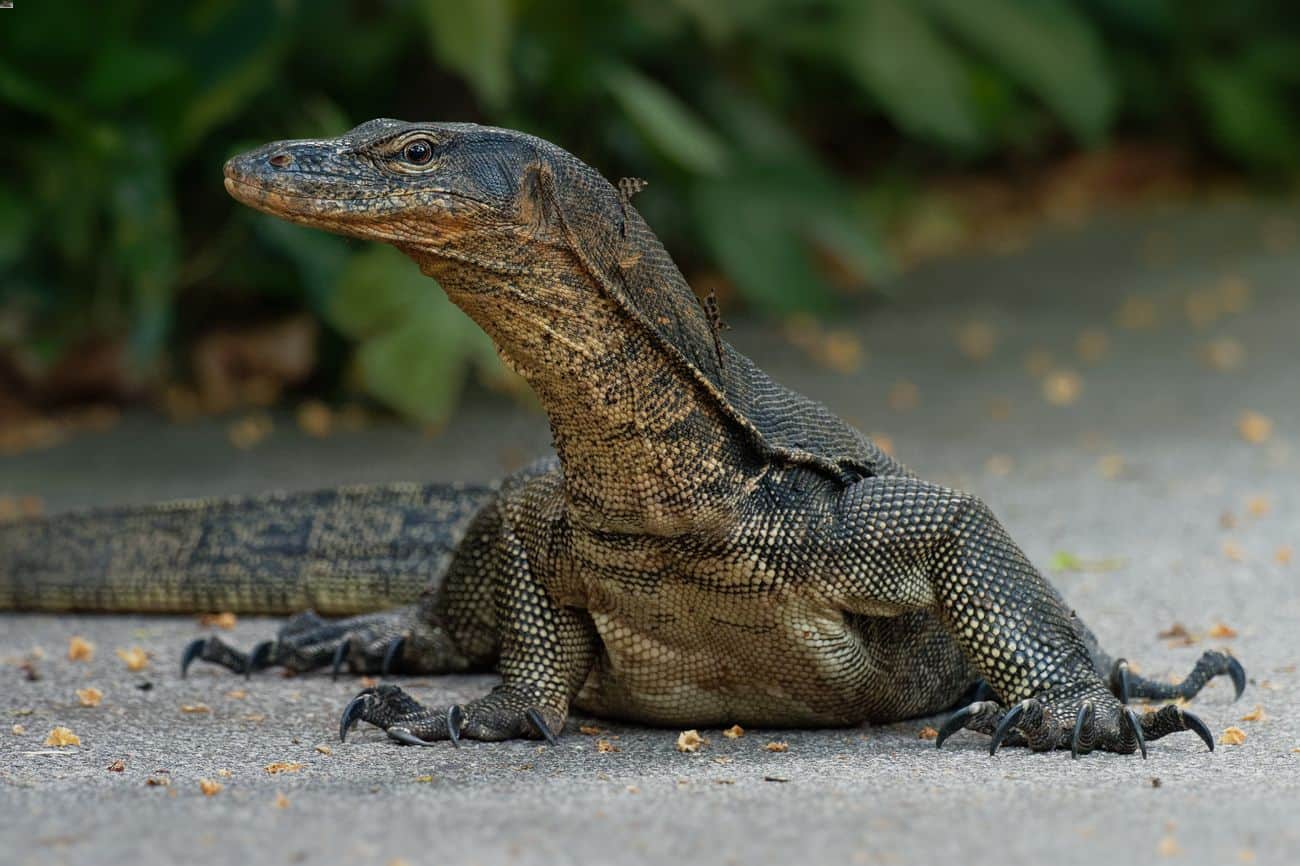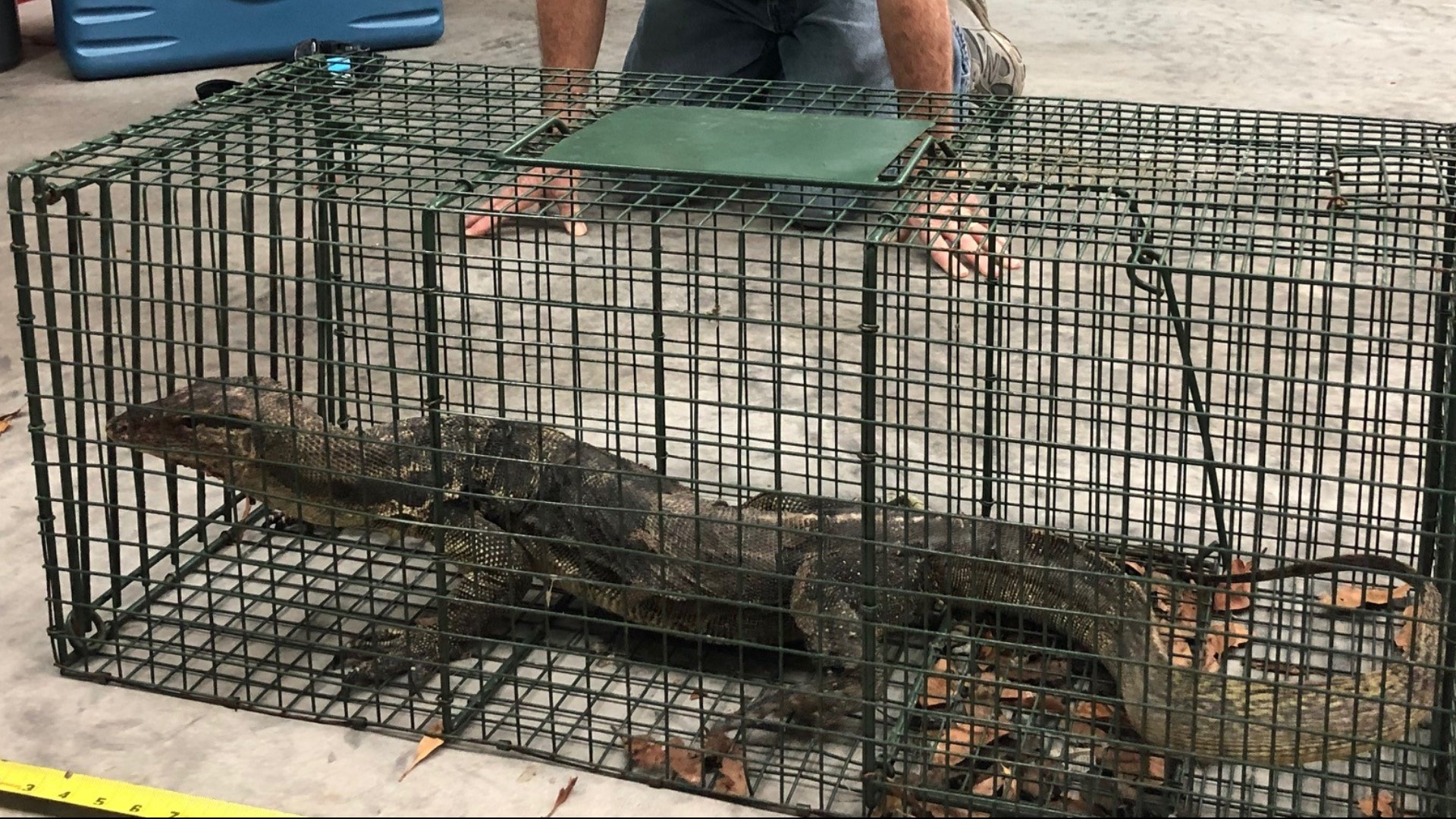Asian Water Monitor in Florida

Asian water monitor florida – The Asian water monitor lizard (Varanus salvator) is an invasive species that has become established in Florida. Originally native to Southeast Asia, the lizards were first introduced to the state in the 1990s through the pet trade. Since then, they have spread throughout the southern half of Florida and have become a threat to native wildlife.
Asian water monitors in Florida have become an invasive species, but their presence has also highlighted the need for environmental protection. Just as John Deere’s layoffs in 2024 brought attention to the challenges facing the agricultural industry, the water monitors serve as a reminder of the importance of balancing economic growth with conservation efforts.
Their presence underscores the need for sustainable practices that protect both our environment and our livelihoods.
History of Introduction
The Asian water monitor was first introduced to Florida in the 1990s, when several individuals were released into the wild by pet owners. The lizards quickly adapted to the state’s warm climate and abundant waterways, and they have since become well-established in the southern half of Florida.
The invasive Asian water monitor, an imposing lizard that has established itself in Florida’s waterways, has raised concerns among residents. However, news has spread like wildfire that Jennifer Lopez has abruptly canceled her highly anticipated tour, leaving fans in a state of bewilderment.
While the reasons behind J.Lo’s decision remain shrouded in mystery why jlo cancelled tour? , the Asian water monitor continues to thrive in Florida’s delicate ecosystem, posing a threat to native wildlife and raising questions about the long-term consequences of its presence.
Impact on Native Ecosystems
The Asian water monitor has had a significant impact on native ecosystems in Florida. The lizards prey on a wide variety of animals, including fish, frogs, turtles, and small mammals. They have also been known to attack and kill birds, including endangered species such as the wood stork and the snail kite.
In the swamplands of Florida, the invasive Asian water monitor lizard poses a growing threat to native wildlife. These apex predators, reaching lengths of up to 8 feet, have become a state of emergency , threatening the delicate balance of the ecosystem.
Their unchecked population growth has led to a decline in native species, as they prey on eggs and young animals. The Asian water monitor’s presence has sparked urgent calls for action to control their spread and protect the fragile biodiversity of Florida’s wetlands.
Physical Characteristics
The Asian water monitor is a large lizard, with adults typically reaching lengths of 4-6 feet. The lizards have a long, muscular body with a powerful tail. They are covered in scales that are typically dark brown or black in color. The lizards have a long, forked tongue that they use to taste the air for prey.
Behavior, Asian water monitor florida
The Asian water monitor is a semi-aquatic lizard that spends much of its time in water. The lizards are excellent swimmers and divers, and they can often be seen basking on logs or rocks near the water’s edge. The lizards are also good climbers, and they can often be seen in trees.
Habitat Preferences
The Asian water monitor prefers to live in areas with access to water, such as rivers, lakes, and marshes. The lizards also inhabit mangrove swamps and coastal areas. The lizards are adaptable and can be found in a variety of habitats, including urban areas.
Conservation and Management: Asian Water Monitor Florida

The conservation status of Asian water monitors in Florida is a complex issue that involves multiple factors, including habitat loss, over-collection, and competition with native species. These factors have contributed to the decline of Asian water monitor populations in the state.
Current management strategies focus on controlling the population of Asian water monitors and mitigating their impact on native species. These strategies include habitat modification, trapping and removal, and public education and outreach.
Habitat Modification
Habitat modification involves altering the environment to make it less suitable for Asian water monitors. This can include removing dense vegetation, creating barriers to prevent their movement, and draining wetlands.
Trapping and Removal
Trapping and removal involves capturing Asian water monitors and relocating them to other areas or euthanizing them. This method is often used in areas where Asian water monitors are causing significant damage to native species or where they pose a threat to human safety.
Public Education and Outreach
Public education and outreach are essential components of Asian water monitor management. Educating the public about the risks associated with invasive species can help to reduce their spread and impact on native species. Outreach programs can also encourage people to report sightings of Asian water monitors, which can help to track their distribution and abundance.
Impacts on Native Wildlife

The presence of Asian water monitors in Florida poses significant threats to native wildlife, disrupting local food webs and ecosystems. Their predatory behavior, size, and adaptability make them formidable competitors, impacting the survival and abundance of native species.
Predatory Behavior and Impact on Local Food Webs
- Asian water monitors are opportunistic predators, consuming a wide range of prey, including fish, amphibians, reptiles, birds, and small mammals.
- Their voracious appetites and efficient hunting techniques give them a competitive advantage over native predators, potentially leading to population declines of native species.
- The introduction of Asian water monitors disrupts local food webs, altering predator-prey relationships and potentially destabilizing entire ecosystems.
Ecological Consequences of Their Presence
The long-term ecological consequences of Asian water monitor presence in Florida are still being studied. However, concerns have been raised about:
- Competition with native predators for food and resources.
- Depletion of native prey populations, leading to cascading effects on other species.
- Potential hybridization with native monitor species, leading to genetic dilution and loss of biodiversity.
Further research is crucial to fully understand the impacts of Asian water monitors on native wildlife and develop effective conservation and management strategies.
The Asian water monitor is a large lizard native to Southeast Asia. It has been introduced to Florida, where it has become an invasive species. The Asian water monitor is a voracious predator that can eat a variety of animals, including birds, reptiles, and mammals.
It is also a threat to native wildlife, as it can compete with native predators for food and habitat. For more information on the Asian water monitor in Florida, please visit asian water monitor florida.
The Asian water monitor is a large, semi-aquatic lizard found in Southeast Asia. It is a voracious predator, feeding on a variety of animals, including fish, frogs, and small mammals. In recent years, the Asian water monitor has been introduced to Florida, where it has become an invasive species.
This has raised concerns about the impact of the lizard on the native ecosystem. Some experts believe that the Asian water monitor could compete with native predators for food, while others worry that it could spread diseases to native wildlife.
The Florida Fish and Wildlife Conservation Commission is currently working to develop a management plan for the Asian water monitor. In the meantime, residents are urged to report any sightings of the lizard to the commission. For more information on the Asian water monitor, please visit the supplemental security income news website.